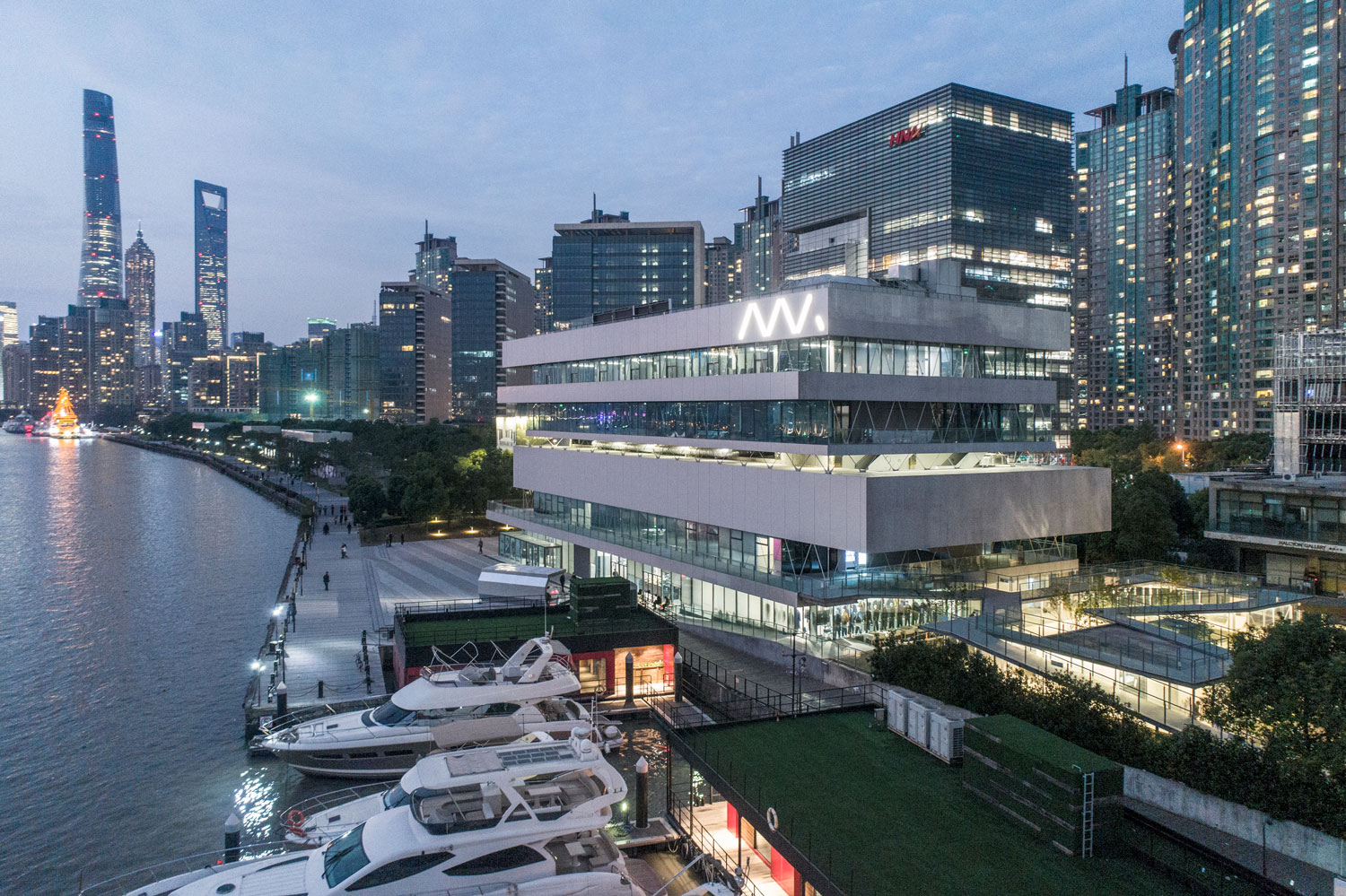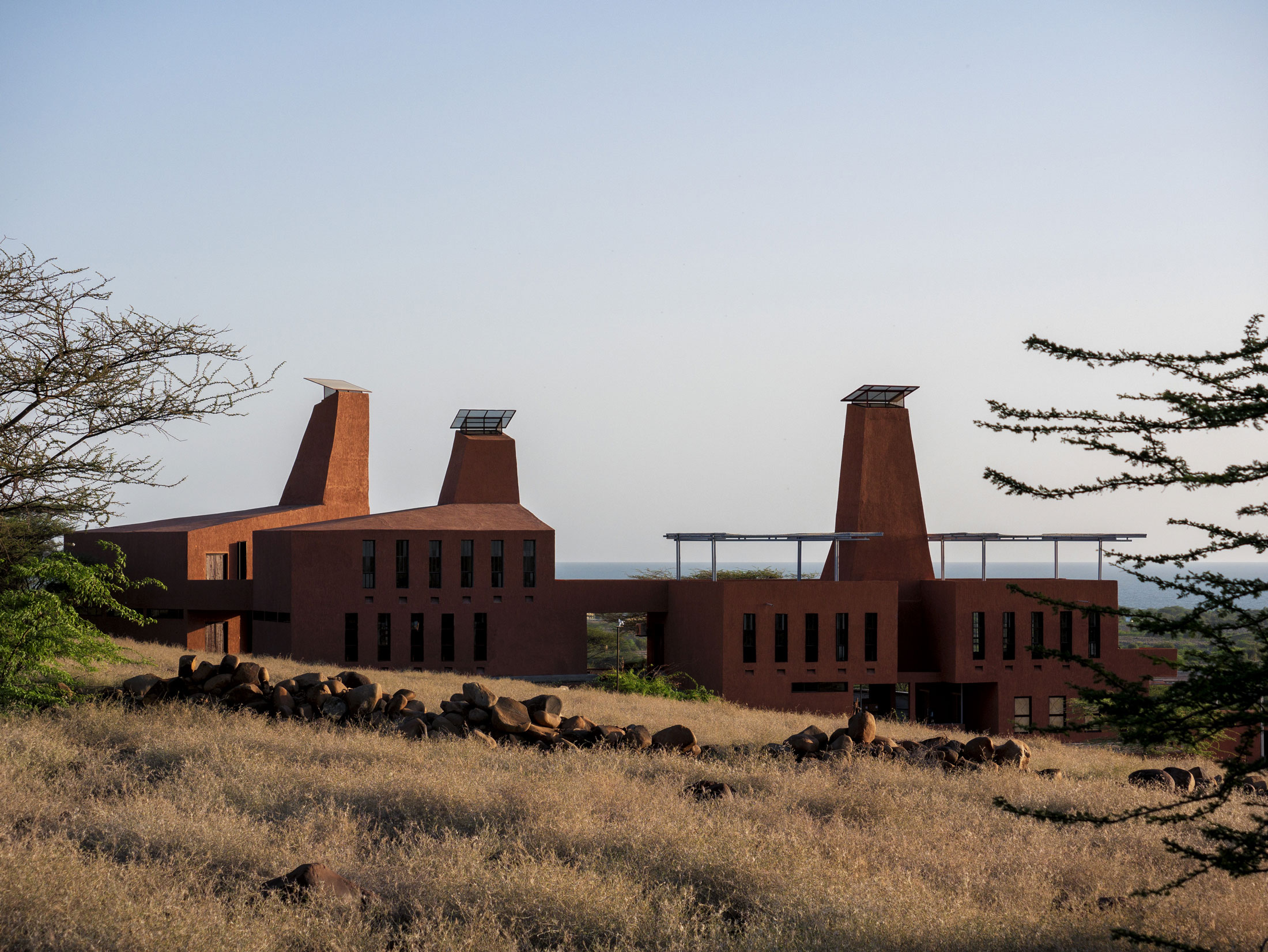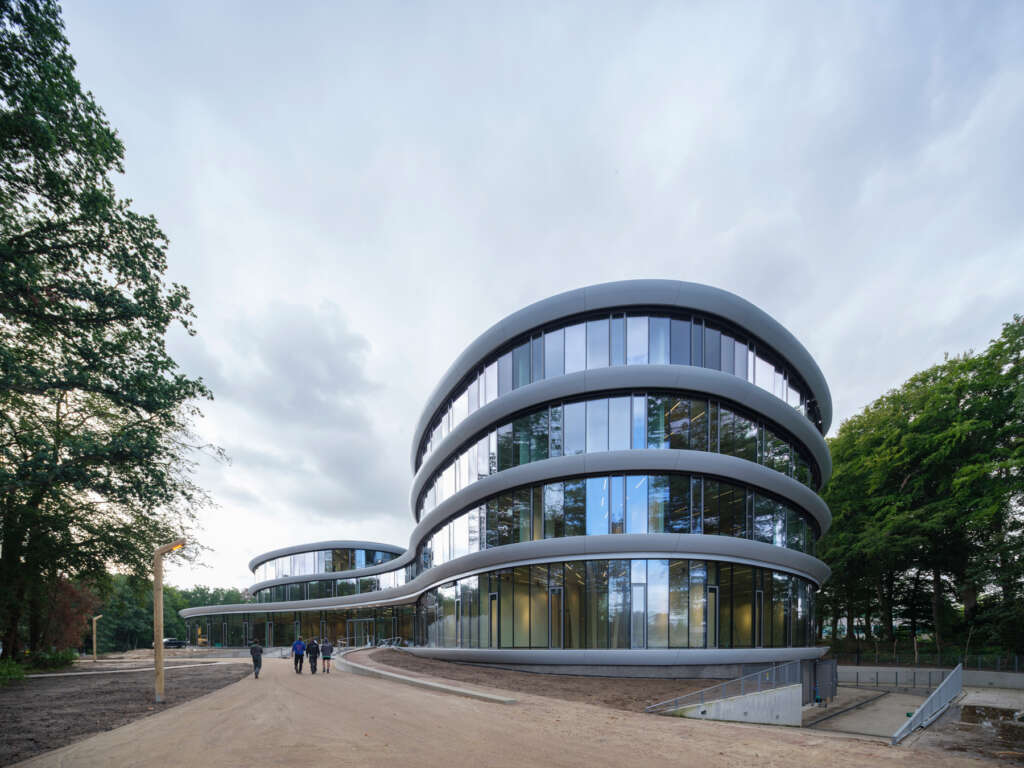
The following description is courtesy of RAU Architects.
The Fully Reconstructible Triodos Bank Office is Taking World Firsts
Zeist, The Netherlands – Triodos Bank’s new, fully sustainable and circular office was officially delivered to the bank. RAU Architects and Ex Interiors have been commissioned by Triodos Bank and developer EDGE to design a fully, reconstructabe, wooden “cathedral” that sets the tone in a circular and sustainable manner worldwide. The office is the first large-scale, 100% wood, reconstructible office building. This building also serves as the first temporary material bank, and the CO2 footprint is minimal.
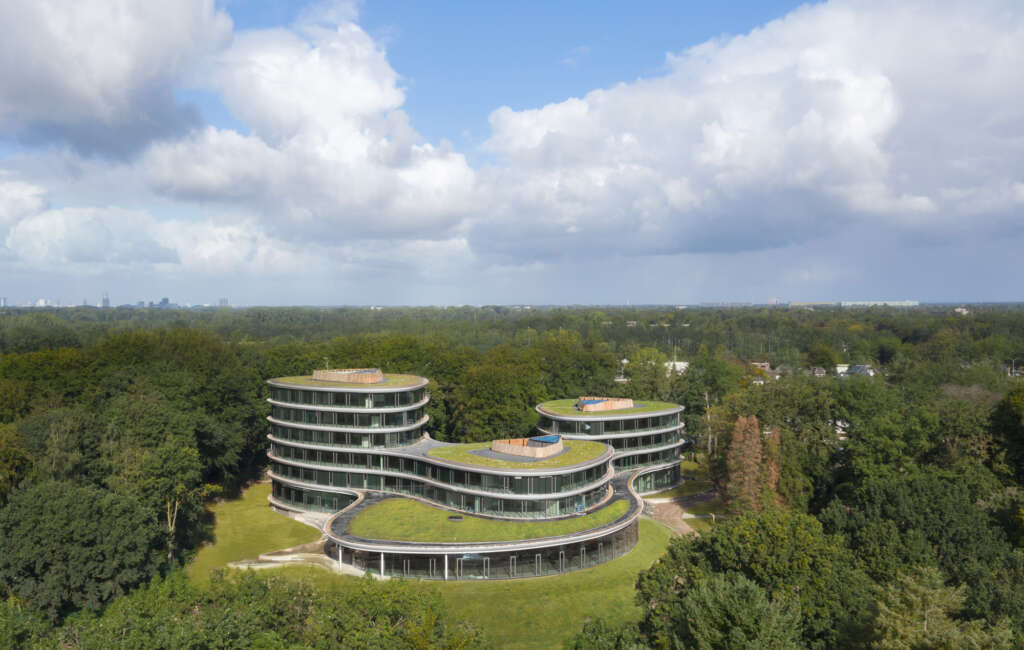
From Estate to Good Land
The bank as new resident of De Reehorst – The new office of Triodos Bank is located on De Reehorst Estate in Zeist. De Reehorst is part of a series of rural areas in Zeist and Driebergen, known as the Stichtse Lustwarande, and is an important link within the National Ecological Network (EHS). In 2011, Triodos Bank decided to build a new office in De Reehorst in collaboration with Ex Interiors. Following earlier high-profile (head) offices from 1999 and 2006, RAU Architects also designed this new office. The aim was to achieve a “gesamtkunstwerk” in which, from day one, there was optimal cooperation with all other advisers such as Aronsohn construction,
Deerns consultants, DGMR, BBN, landscape architects Arcadis and construction company J.P. van Eesteren and its subcontractors. By giving the design maximum circular potential, a dynamic balance is created between nature, culture and economy. The arrival of Triodos Bank has led to new momentum to bring the estate into the 21st century.
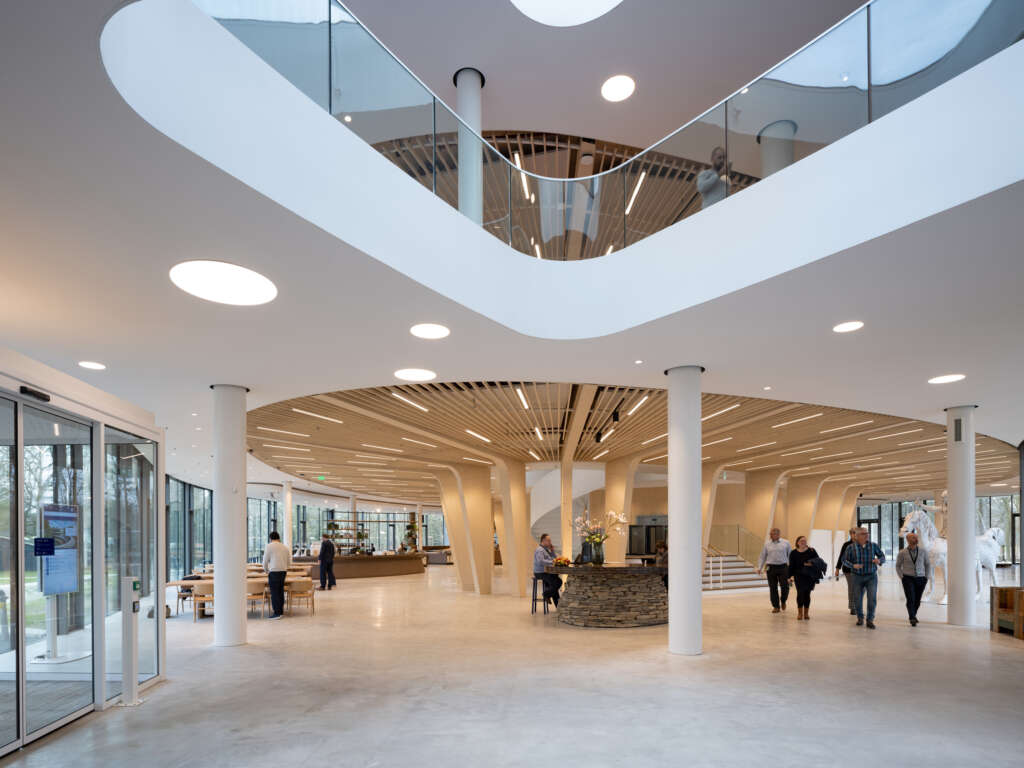
The Wooden ‘Cathedral’
The wooden ‘cathedral’ – The building has no clear front or back. The nature-friendly footpaths lead the passersby and employees to the two entrances. Once inside, the transparency of the building and the special wooden construction become clear. The fully glazed façade extends from floor to floor, allowing natural light to penetrate deep into the building. A floor-to-ceiling window can be opened for each 3.60-metre facade pattern.
This makes the connection with the surrounding landscape even sharper, without it disrupting the indoor climate adjustment. Voids create visual connections between the different floors. The spiral staircases in the voids connect the floors and form short openings that stimulate the use of the staircase in a natural way. Both the
design and the use of materials and colours within the building derive their direct inspiration from the landscape.
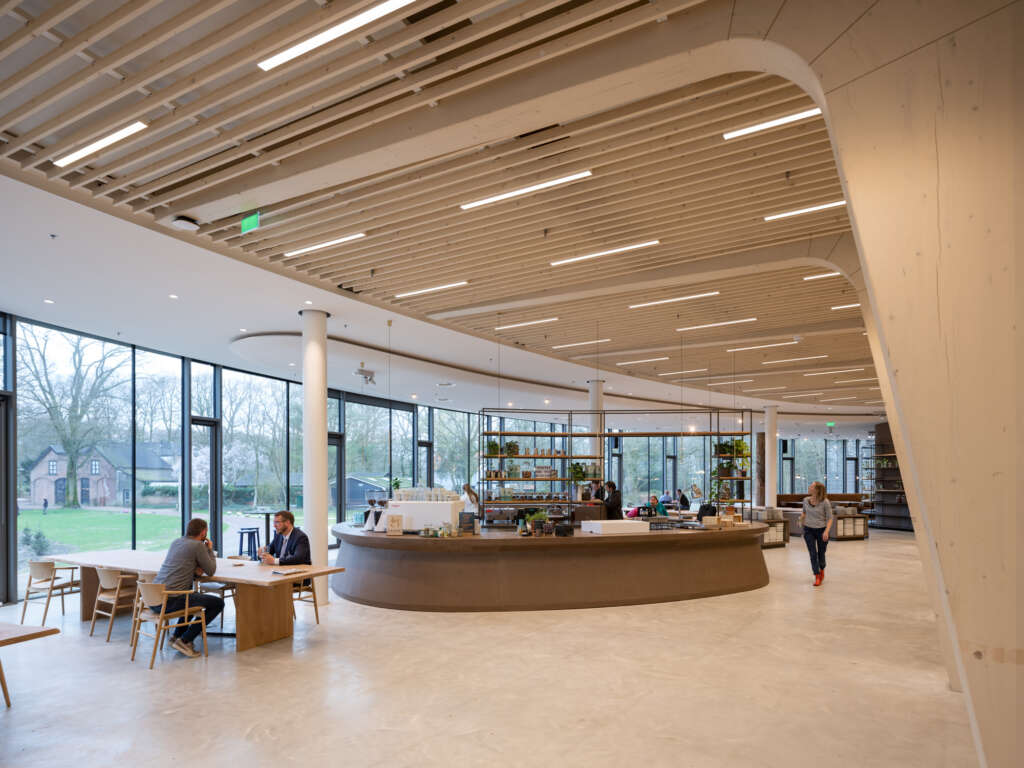
From the nuanced choice of materials, the wooden structural components stand out visually from the rest. The wooden construction is immediately visible in the form of laminated rafters and wooden CLT (Cross Laminated Timber) cores. The wooden CLT storey floors are partially camouflaged by the wooden tracks and the climate
ceiling elements located above them. The ground floor has a large storey height, creating the impression of a “cathedral” when observing the wooden rafters that are placed around the completely wooden cores. In order to maximise the transparency of the work floors and the relationship with the landscape, special workspaces have
been separated by means of transparent partitions that meet very high noise requirements. However, where visual privacy must be guaranteed, transparent walls have been replaced by solid walls. These are often provided with a linen finish for optimum acoustics.
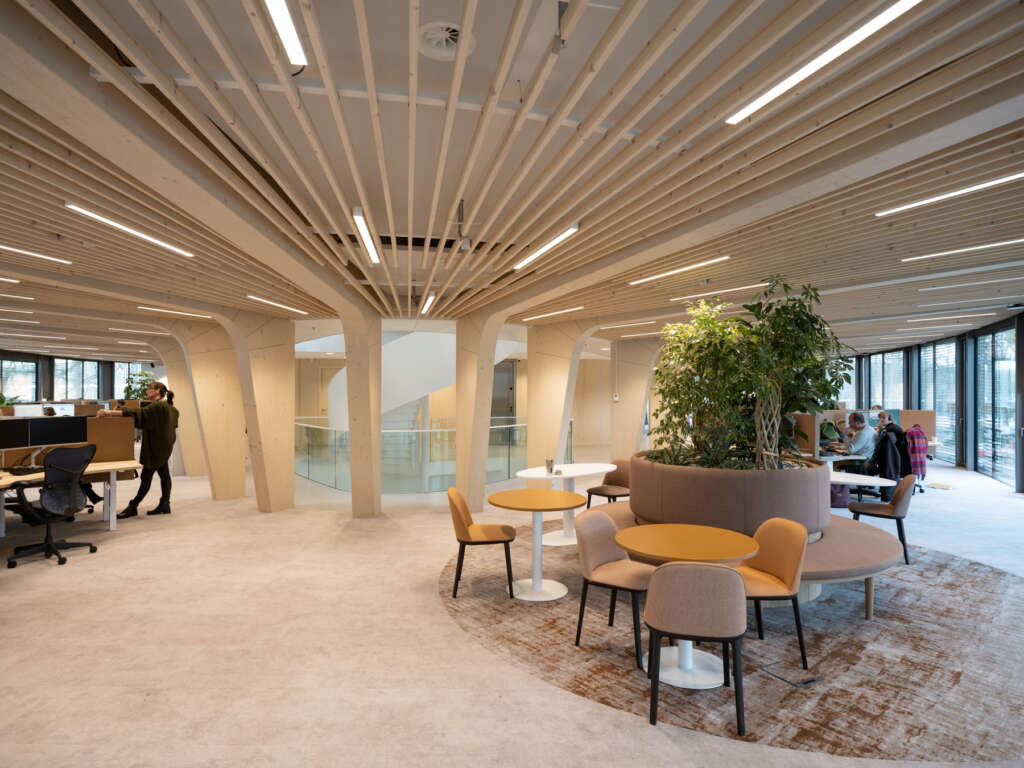
Form – Body – Build
A building for nature, culture and economy – The composition and form of the five-storey building (12,994 m2) is inspired by nature, the rhythm of the landscaped rooms in the surrounding estate and the flight paths of bats.
The three transparent, uniform towers run from south to north and are alternately connected on the ground, first and second floors. This physical body provides a beautiful view for all employees daily. Because of its shape, three new “landscape rooms” are created between the edge of the forest and the building and create a diversity of new landscape qualities around it. The interior designed by Ex Interiors further reflects the beauty of the surrounding landscape. The choice of organic forms, refined materials and sober use of colour inspired by the estate’s pallet ensure a natural stillness upon entering and reinforce the merging of the building with the environment. The wood, that’s used in both the furniture and the floors, mostly comes from the estate.
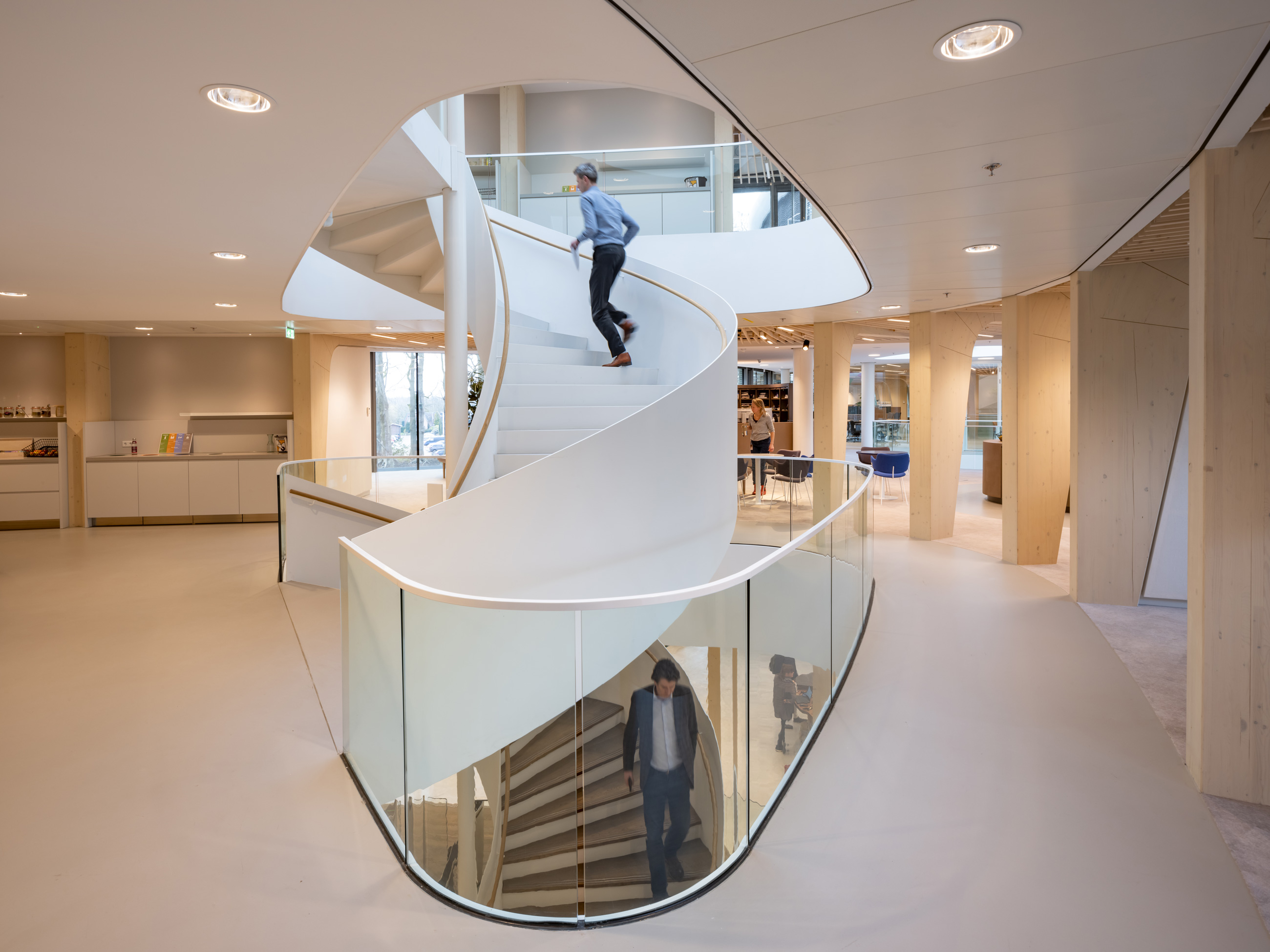
By selecting materials for their authenticity, an extra dimension has been added to the building, creating an integrated design that contributes to the peace and serenity of the building. Within this grandiose openness and transparency in the building, you experience a sense of security and safety through the implementation of the various functions. A “meeting building” where the interaction with nature and a spontaneous meeting between employees and visitors takes place naturally. For this, the ground floor is the publicly accessible area. On the first floor there is a collaborative floor with a diversity of workplaces focused on an internal meeting for employees of the bank. The other workplaces for the Triodos Bank employees are in the three towers with a breathtaking view of the landscape.
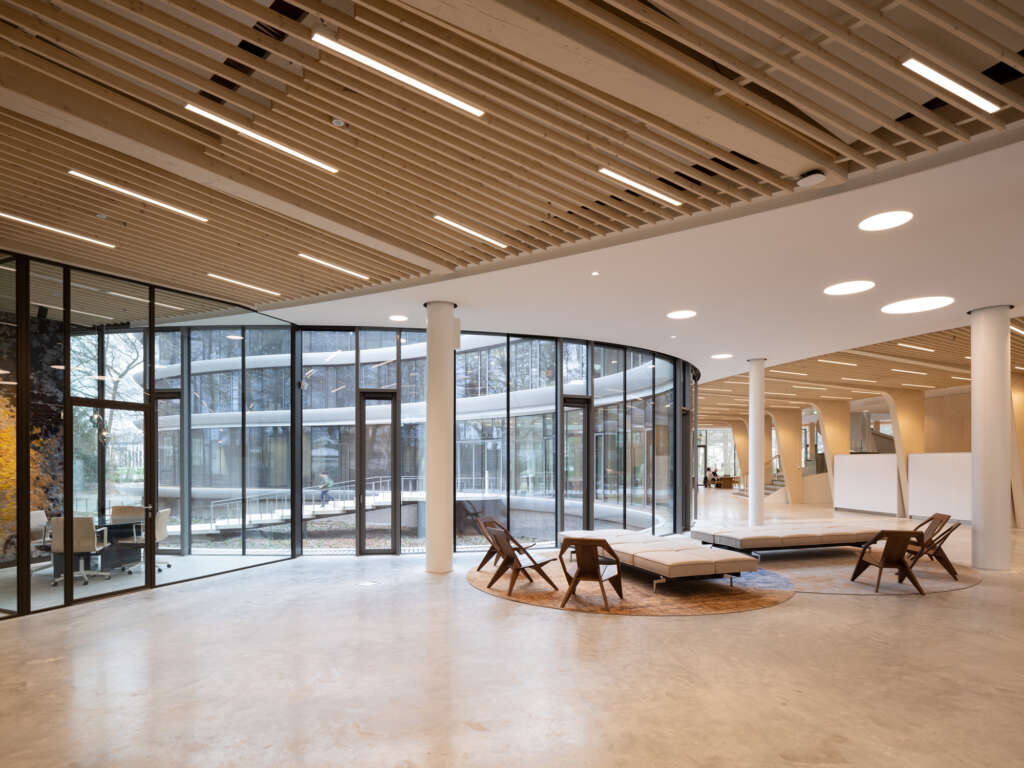
Wood Stance
The first large-scale wooden office building – The entire building, both the lower parts and the towers, consist of a unique wooden construction. Wooden floors, wooden shafts and wooden columns together form a spectacular construction like that of a “cathedral”. The composition of the building and its glass facades ensure maximum natural light penetration and a magnificent view of the estate so that all employees work not only on but also in the estate. The building contains 1,615 m3 of laminated wood, more than 1,008 m3 of cross-laminated timber (CLT) and 5 original tree trunks. Only the basement has a concrete structure because of water management. This has created a building with the lowest CO2 footprint to date.
Sustainability optimises the present Valuable does not have to be expensive – In addition to integrating the very highest sustainability goals and obtaining the BREEAM Outstanding certification, the new office is also an energy-neutral housing that meets the highest health requirements of processed materials. For example, the share of wood in the main supporting structure reaches almost 100%, and only natural textile is used in the interior. Climate islands regulate the climate at the micro-level. Therefore, integrated sustainability forms the basis for this socially responsible (building) development.
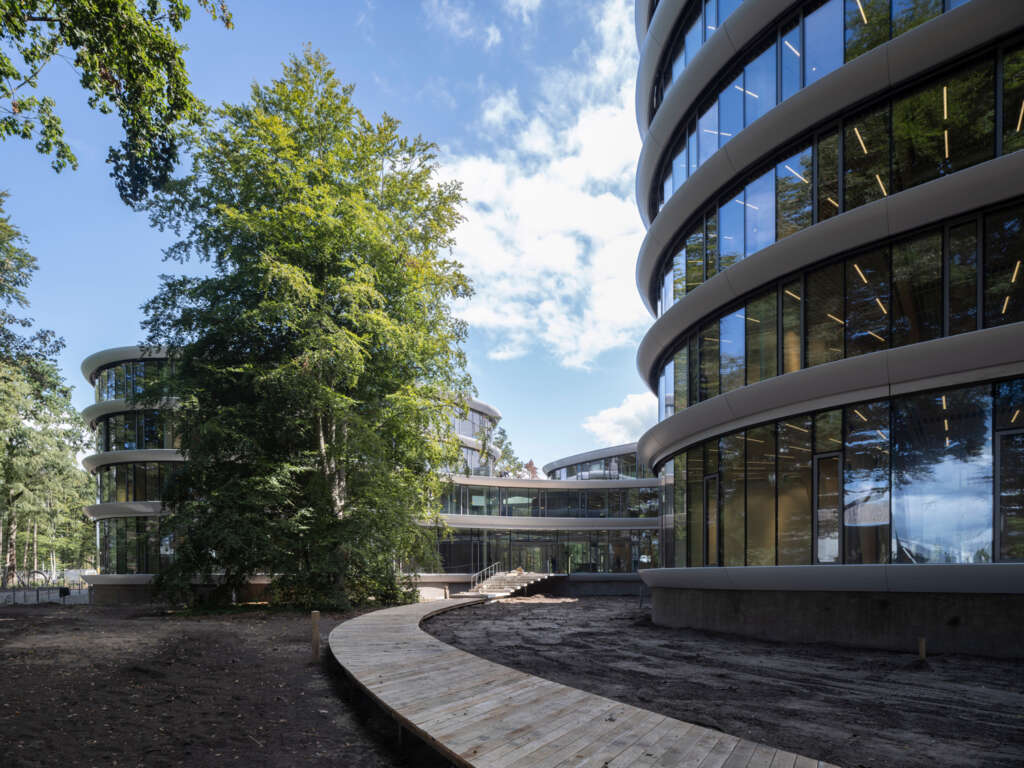
Circularity facilitates future
A building as an option for the future – RAU Architects sees a circular building as a temporary combination of products, components and materials with a documented identity. The origin and planned re-use of all products, components and materials are carefully documented in order to be able to easily offer them new usage in the
future. It is important to anticipate possible changes as far as possible when designing buildings due to changes in user requirements, differences in the useful life of building components or external influences such as changing regulations or climate change. Facilitating the permanent consequences of impermanence is, therefore, characteristic of the design. By converting real estate into ‘loose goods’, a building with maximum circular potential has been realised: rebuilding without loss of value. The building is literally screwed together with 165,312 screws. This means that whenever dismantling the building, the circular potential can be activated 100%
without loss of value of materials, components and products.
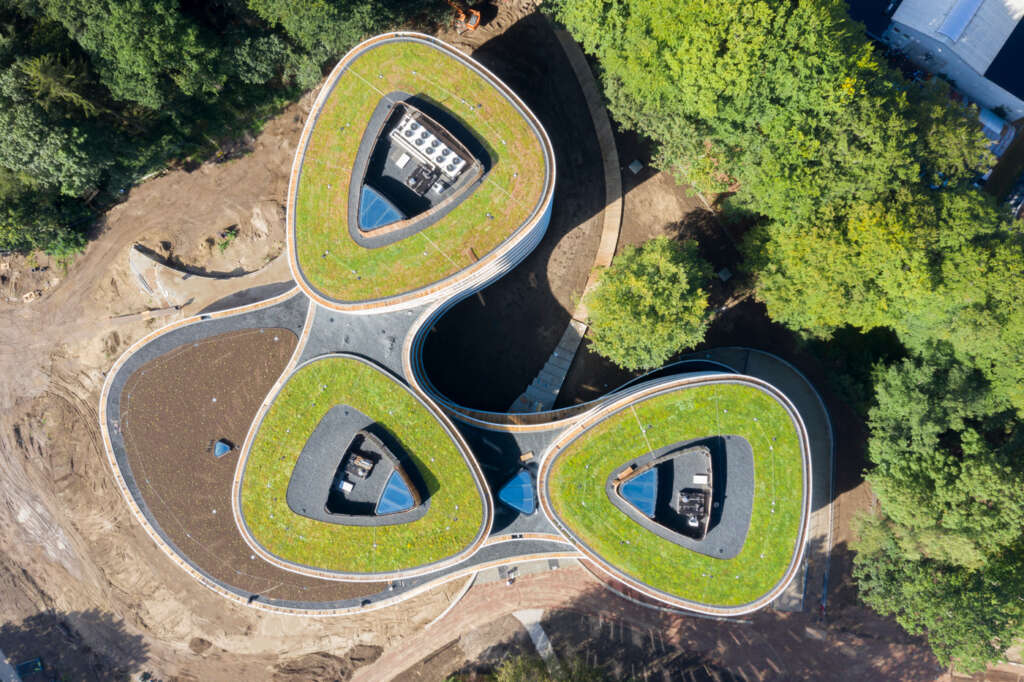
The Bank in a Bank
The first building in the world to be conceived as a materials bank – The fact that the material values are also monitored online via the Madaster platform (the land registry for materials) means that the building is not only a material warehouse but also a material bank. With this, the value of materials in the future balance can be made technically liquid and/or tax-activated.
Collaboration
The design team started work on behalf of Triodos Bank. EDGE facilitated the entire process. The contractor is J.P. van Eesteren and the installer is Bosman Bedrijven. Finally, Arcadis and Copijn are involved as garden and landscape architects and tree specialists. The employees of Triodos Bank will move into the building on 25
November.

